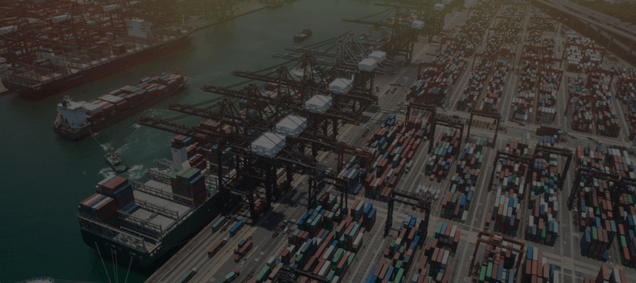Just-in-case versus just-in-time: A supply chain analogy

We are living through a period of massive upheaval and uncertainty. Predicting what even the next 24 months will hold is nigh on impossible. One thing we do know: You can't shrink to greatness.
Unless you have been hiding under a rock, you will be aware of the ongoing global supply chain crisis. Manufacturing companies around the world have experienced significant disruption for over two years, exacerbated by the global pandemic, trade wars, staffing issues within transport and logistics and latterly the impact of geopolitical events, most notably Russia's war in Ukraine.
From lockdowns in Shanghai to the pressures of Brexit on our doorstep, many large multinationals are rethinking their approach to supply chain risk management. Previously, the emphasis was on 'just-in-time' lean manufacturing and gaining efficiencies by holding onto as little stock as possible.
But the pendulum has swung back. Corporates are considering whether they need to retain some 'just-in-case' stockpiles - looking to high-profile examples, such as PPE shortages - as proof that sometimes it is good to hold onto a bit of stock for a rainy day.
And, of course, times are changing. Globalisation as we once knew it may have seen its heyday
Concerned about the impact of decisions and events on the other side of the world, some companies are moving their supply chains closer to home (so-called reshoring and 'friendshoring'). This is no small trend with up to a quarter of global supply chains are currently on the move, according to McKinsey.
The perils of holding onto too much capital
So what does this mean for the insurance industry? It is in fact a prescient analogy when you take a step back and consider the turmoil we find ourselves in.
The insurance and reinsurance industry remains well capitalised, but for how long? Global reinsurance capital declined from $675 billion at the start of the year to $645 billion at mid-year 2022, according to the latest data from Aon.
The industry is facing mounting Ukraine-related losses, the prospect of inflation and financial market volatility, and the Atlantic hurricane season has only just begun. In and around the usually sheltered streets of Leadenhall there is growing disquiet surrounding the cost-of-living crisis (there is no ignoring it at the petrol station or the supermarket) and how it will trickle through.
There is a temptation in such uncertain circumstances to hold onto too much capital and taking an overly cautious 'just-in-case' approach while continuing to emphasise cost optimisation. This is what we see many clients doing as their margins begin to narrow.
Of course there are merits in taking a cautious approach, boosting reserves, focusing on fewer, more profitable classes of business and divesting of expensive and unnecessary office space given the shift to hybrid working, for instance. But it is essential to manage such strategies very carefully: Cut too deep and it will be difficult to return.
Not everyone is at the same stage in the cycle. Some remain doggedly in growth mode, seeking M&A opportunities and tapping into private equity investment. There is still money around, but it comes with greater scrutiny attached and growing pressure to generate the right level of returns.
What of the middle road? How do you grow and optimise the business while holding onto some capital? What levers do you pull? Either you reinvest, or you think differently.
Time to reinvest
As Paul Jardine mentioned in his latest blog post, the time to act is now. You've got to overcome your hesitancy and take some bold steps on your transformation program. Don't wait until the next soft market and/or market shock because it will be too late and the market will have moved on.
Think about your growth strategy and how you're going to get the revenue up. We are currently seeing a lack of investment in acquisitions (with a few notable exceptions), but the hard market cycle can't last forever and the organic growth opportunities will begin to dwindle.
There is a lot of guesswork around what the immediate future holds but you need to live and die by the data that you have. Based on the data, you should know how to move forward.
The trends we are seeing play out in global supply chains thus apply to the world of insurance when it comes to cost versus revenue, or just-in-case versus just-in-time. Ultimately, you can't keep shrinking to greatness and companies have got to reinvest. Those that do should find ample opportunity to take market share.
Fresh Content
Explore our latest market insights, career advice, and more.






















